Late April, Crete and it’s springtime. Wildflowers, in yellows, reds, blues and whites, shimmer in the fields and on the mountainsides. The sound of bees, amidst the thyme bushes’ small blue flowers, vibrates in the clear air.
Swifts, migrating north from Africa, are darting high in the air above the carob trees then low amongst the sheep and goats.
But unpredictable spring weather also brings wind, rain and clouds; yet that means stunning sunsets and dramatic, cloud-filled skies rolling towards Europe’s southernmost island, Gavdos.
Then, suddenly it seems, we’re into May and my time is up. I’m heading home to Edinburgh by ferry, bus and train – less flying is the order of the day. I’m almost put off by the logistics of my 4,000 kilometre journey as I sit at a café table where I’m staying, pouring over timetables and routes. But my friend and host encourages me to keep going. And, after all, no individual step is complicated – whether the night ferry from Crete to Athens or the high speed train from Basel to Paris, and I’ve got a 4 day interrail ticket (to be used within 30 days) to help me on my way.
From Crete to Athens
I leave on a Sunday morning. First, a motor-boat around a couple of bays, then a small ferry along Crete’s southern coast to the port of Sfakia, next a couple of buses from the south-west to Heraklion in Crete’s north-east. I’ve time to wander round the old Venetian port, have a leisurely lunch and catch a glimpse of my night ferry, already visible in the docks, before my travels begin.
Two hours before departure, I’m on board, the dining area is open for a welcome dinner, and the colours of sunset are merging in the sky. A nine day journey lies ahead (though at a pinch it could be done in three to four days if you were in a hurry)
As the ferry pulls out, it’s almost dark, fading streaks of orange above the almost black outline of the old Venetian fort, and lights coming on around the bay and dotted across the more distant hills. I’d hoped to hop more comfortably by day from Crete to Naxos and then to Athens. But it’s still, just, the off-season ferry timetable, so a night ferry it is. And there’s a full moon to guide our way.
The ferry’s not busy and most people are, sensibly, in cabins, so I share the reclining chair lounge with just a few others. But it’s not comfy, a tiny child is talking in soft, but piercingly clear, tones to her mother, ferry workers come in and out, someone finds the volume switch for the tv halfway through the night. I don’t sleep.
Soon enough, it’s 5.30 a.m. I head outside hoping to catch the early sunrise as we pass still dark islands. But the ferry is already making its way slowly into the jolting environment of Piraeus port in Athens, as the sky pinkens, though it takes another 40 minutes to dock into the muddle of taxis, big HGVs and pedestrians as the ferry slowly disembarks its load.
It’s too early to go to the studio flat I’m staying in so I head to the metro and towards the Plaka district in the centre, looking for an early café to come round in. Fortified by a Greek coffee, I rest up in the early morning sun in a tree-lined square before heading by midday to the attractive, small studio I’ve stayed in once before in the non-touristy but central district of Koukaki.
I’m in Athens for a day and a half. It’s enough time to wander around the beautiful botanic gardens that sit just by the Greek parliament building near Syntagma square, and then to walk the path beneath the Acropolis, looking down at the large metropolis spreading below, just the tops of the surrounding mountains still green amidst the urban reach.
Later, I stroll the narrow streets of the city centre, past shops, cafes, old churches, buy a cheap handbag to replace my old, falling apart one (not ideal for travel). It’s a Monday, so many museums and galleries are shut but I am lucky enough to have been in the wonderful Acropolis museum recently so a more gentle, slow visit feels fine. In the evenings, I eat in one of the bustling cafes in the green, tree-lined, pedestrian street near my studio. A pigeon tries to invade my table, then the man’s opposite, then mine again, we swap smiles.
Athens to Bari
By the morning I leave, my local café already knows my coffee order – a small, Greek coffee, half-sugar (or metrio in Greek). I’m heading across town to Larissa station for my train plus bus to the port city of Patras, a 2-3 hour journey west from Athens across the Peloponnese peninsula. The small train pulls out through the Athens suburbs, passing through industrial areas then along the sparkling waters of the Saronic Gulf, looking out to islands in the distance. A poor-looking group of two women and two young boys are told to leave the train, at one stop, by the conductors, fare-dodging it seems.
The train isn’t going through to Patras so, halfway, we all switch to a coach waiting for us outside the station. Soon, we’re bowling along a quiet motorway on the edge of the deep blue waters of the Gulf of Corinth.
There are green mountains to the north, rolling hills to our south, the tall trees that look like cypresses giving the hills an almost Italian feel. It’s a beautiful journey – if a tad alarming when the bus driver, chatting on his phone takes both hands off the wheel to gesticulate.
We arrive into hot, sunny Patras, where there’s time for a quick lunchtime snack before I get a taxi to the port, ten kilometres further south.
The young taxi driver tells me some of her life story as we go – including the fact she has recently studied European studies; so, we chat about our shared interest in the EU (despite Brexit) on the way.
There’s a 3 hour check in for the ferry and I’m soon on board, exploring the various decks I can access. Looking down, there’s around 15 HGVs already on board in the open space below the first passenger deck. It’s a working boat not just a passenger or tourist ferry.
It’s a beautiful afternoon, looking out on the sparkling, turquoise waters of the Gulf of Patras that will later lead us into the Ionian sea then the Adriatic to our destination of Bari in the heel of Italy. There are hazy distant islands and green hills in all directions. To the east, the graceful metal structure of the Rio–Antirrio suspension bridge linking north and south across the Rion strait. A red tugboat goes by. And eventually we head off too.
A 17 hour journey lies ahead. And once again I’m amongst the few (hardy or foolish?) people who’ve taken reclining chairs instead of a cabin (and when I check if there’s any spare cabins, the answer is no). But unlike the Crete to Athens ferry, there’s several hours of daylight to watch the journey into night and later from dawn into the day.
I head, first, for a quick dinner in the café, spaghetti in tomato sauce and a glass of wine. All the staff seem happy to speak English, Greek or Italian. Then I stay out on the decks, as slowly the evening light fades while a dazzling sun sets behind islands leaving a ring of sunset light above the darkening land.
I hadn’t realised but the ferry docks once more, before reaching the Italian port of Bari, at the Greek port of Igoumenitsa, near Corfu. A friend of mine lives nearby for part of the year, on the tiny island of Antipaxos, near Corfu. By text, he tells me we’ll be passing within a mile or two of their house. So, come 11pm, I’m the only one left on the now dark and windy deck, looking out for the couple of lights my friend has told me denotes where his village house is. He takes a blurred photo of our boat passing in the dark, a mile or more away, and I capture the couple of pinpoints of house lights and his flashlight as we go by. His wife thinks he’s crazy but somehow it’s fun. Then we’re into Igoumenitsa, where about 50 or more HGVs trundle on board, while I take refuge in my reclining seat.
I sleep a bit, fitfully, glancing at the time around 5.30 a.m. Outside, I find the start of an amazing dawn unfolding.
The sea is calm, long, low clouds are streaking towards the distant Albanian mountains providing a montage for the ever-changing light. To the west, it’s still dark night but blues, purples, reds and oranges are emerging as I scan the unobstructed hemisphere of sea and sky from west to east.
It’s stunning and dramatic and yet peaceful and beautiful.
There’s only one other person on deck – on the next deck up I chat to a trucker with a large, sleepy dog he’d adopted that looks like a cross between a labrador and a polar bear.
Finally, an orange sun peeks above the horizon and rises in a clear, round ball.
But, not long after, the sun disappears into cloud, and the final few hours into Bari the sea and sky are grey and calm, the drama of dawn left behind. The time goes back an hour – Italian time an hour behind Greek – and I change the time on my camera, scrambling the order of my photos when I download them later. I have a welcome coffee and lemon croissant in the ship’s café and wait as we finally dock at the port. It’s hot, humid and grey.
I choose to walk round the edges of Bari’s old town, not wait for a bus, glimpsing the one thousand year old fort and several churches, heading towards the train station. I’m accompanied briefly by a young Nepali who’s also walking from the ferry. He’s heading to a train then another ferry to the south of France for a summer job, sending money home to his younger brothers in Nepal. I wish him well, stop in the old town for a pizza and, soon enough after that, I’m on the fast train to Rome.
A Roman Day
The train is busy, and everyone is chattering away. Later, I find some space in the train’s buffet car as we head through the mostly flat southern countryside, past small towns, fields of vines and olive trees, then gradually more hills, distant mountains, old villages perched high up. I check the background of one station we stop at – Benevento. The map tells me there’s an almost 2,000 year old Roman triumphal archway nearby, the Arch of Trajan – history in all directions. We past Naples and soon enough I’m getting off at Rome’s Termini station and heading, via the metro, to my decent enough B&B near the Piazza del Popolo.
I’ve been travelling on and off since Sunday. Now it’s Thursday evening. It feels a long way from the quiet bays of south-west Crete to the vivacious, striking streets of Rome. I’m tired but I’ve already seen so many, diverse places and moved through such varied land and seas. It’s been a rich and stimulating journey. I’ve been watching and chatting to many different travellers, workers, inhabitants, all of which makes me think about the complexity of our lives, our sheer numbers in our different locations, our individual and local politics, our international politics, no wonder it’s hard to link all that up through the probably inevitably remote European Union.
But now Rome beckons, so I head out into the warm evening sunlight, fascinated – especially photographically – by the fountain lions, jets of water escaping through their jaws into the marble basins.
I wander down towards the centre, find a seat for a drink in front of the always stunning mass of the Pantheon (despite the tourist masses).
Later, I find a bowl of pasta in a quiet taverna just below where I’m staying.
The next day I have my morning coffee in a café full of students from the local arts school – pleased to be away from tourist haunts. Little sparrows hop on and off my table for crumbs. Then I wander on past the tomb of Augustus, across the Tiber and along its spring-green, tree-lined banks, past the Castel Sant’Angelo, glimpsing St Peter’s but avoiding heading all the way down to its grand square.
I’ve been in luck with my short Rome sojourn: it’s Friday, and on Sunday it will be Pope Leo’s inaugural mass, and for sure Rome will be super-crowded. But I’m leaving early on Saturday.
From the Tiber, I find my way across Rome’s narrow streets to the market at the Campo de’ Fiore – now so over-touristed that the stall holders have signs in English telling people not to touch the produce “No..not even if it’s just for an Instagram story or a selfie”.
Suitably restrained, I walk on, over the river to Trastevere, finding a simple lunch outside a café in a small square. Rome’s lush botanic gardens are nearby so I pass a cooler, restful hour or more following its green paths, glimpsing parakeets in the trees and looking down through the foliage to the city centre below.
I head into a nearby gallery full of renaissance art and then out again onto Rome’s endlessly walkable streets, avoiding the ubiquitous mopeds parked up along streets in big groups.
A glass of wine in the same street café I had my morning coffee in, full of Italian students, rounds off my day.
Part Two of this blog can be found here.


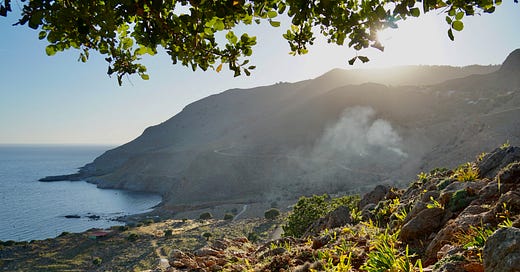




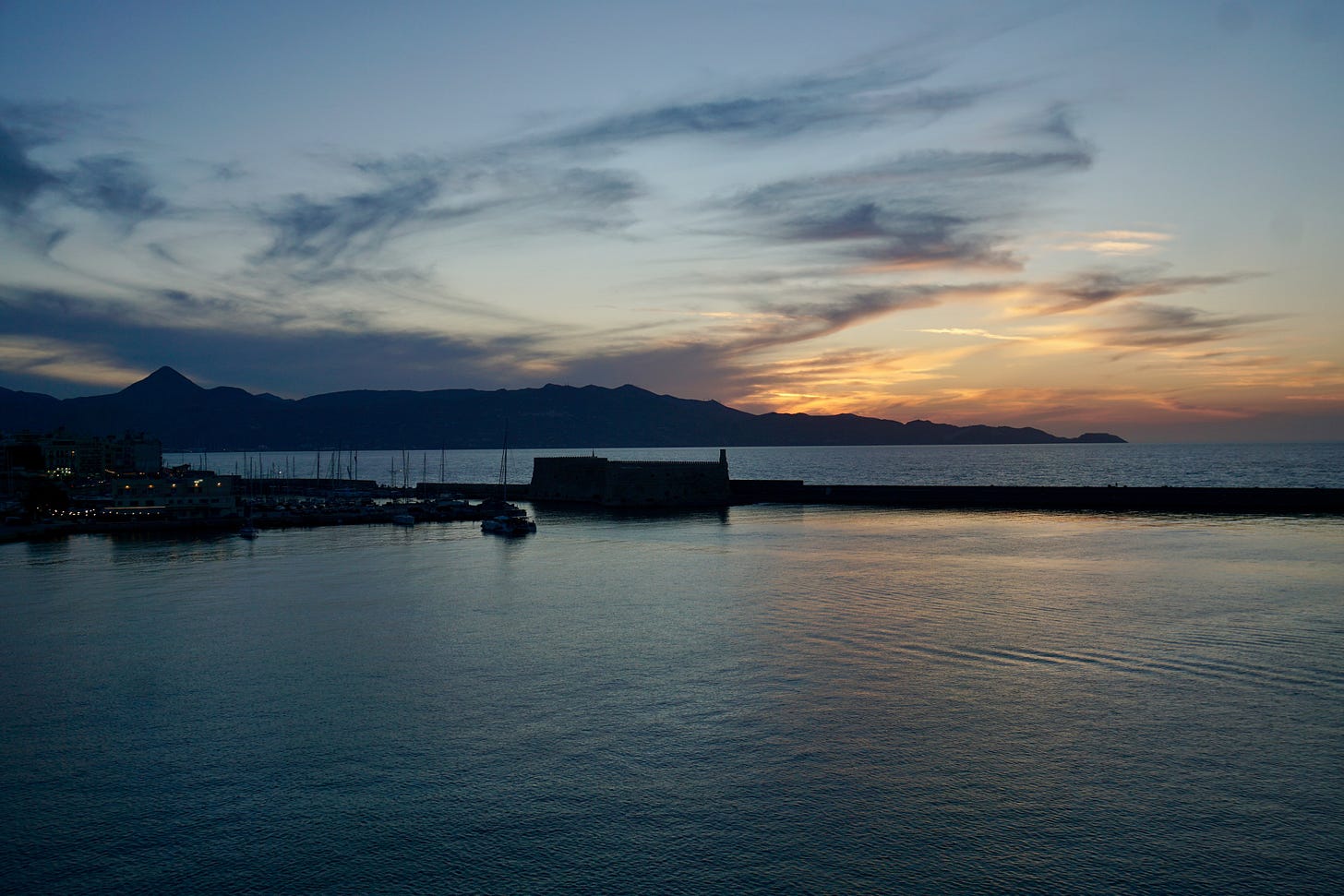
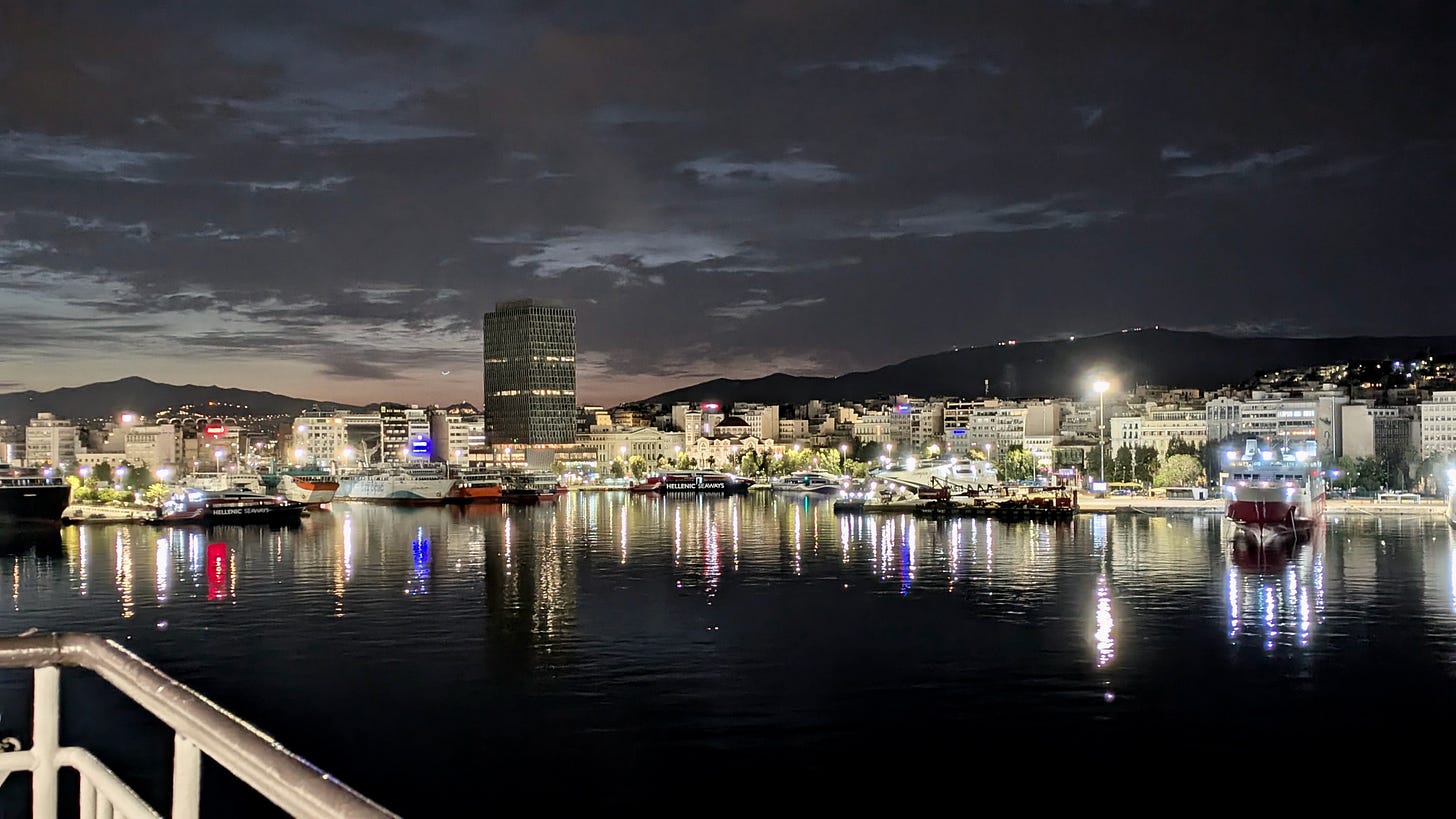
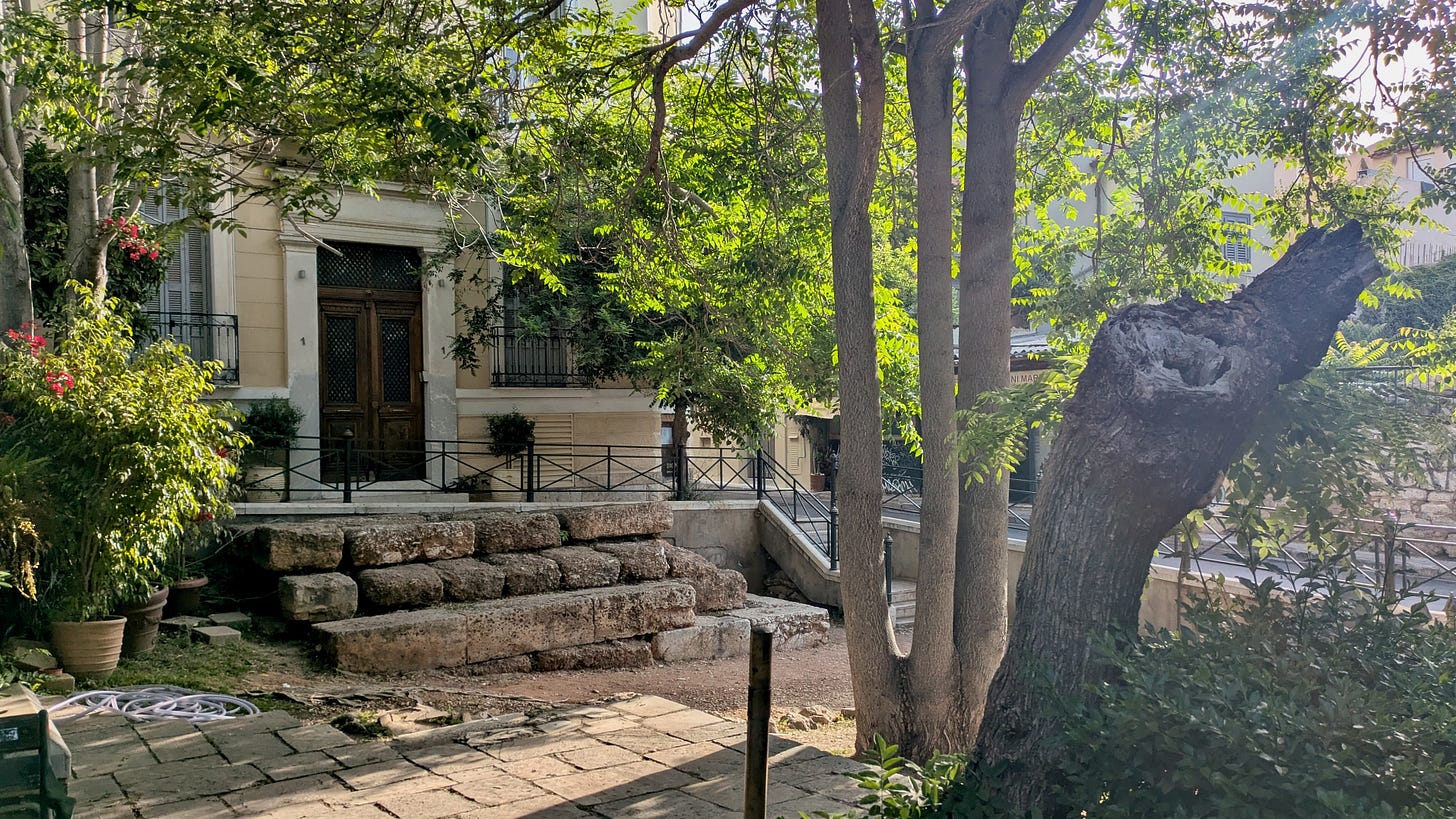

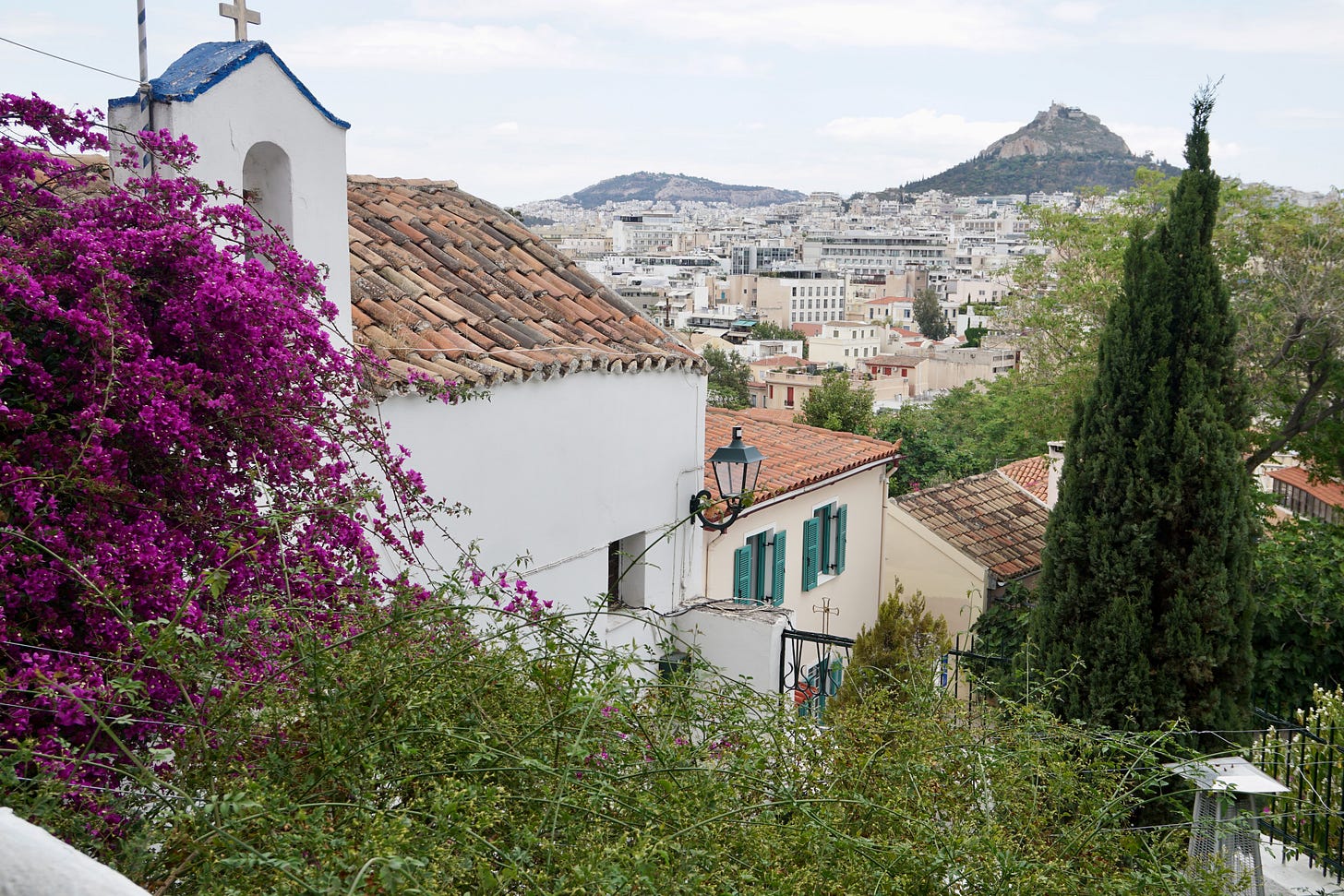

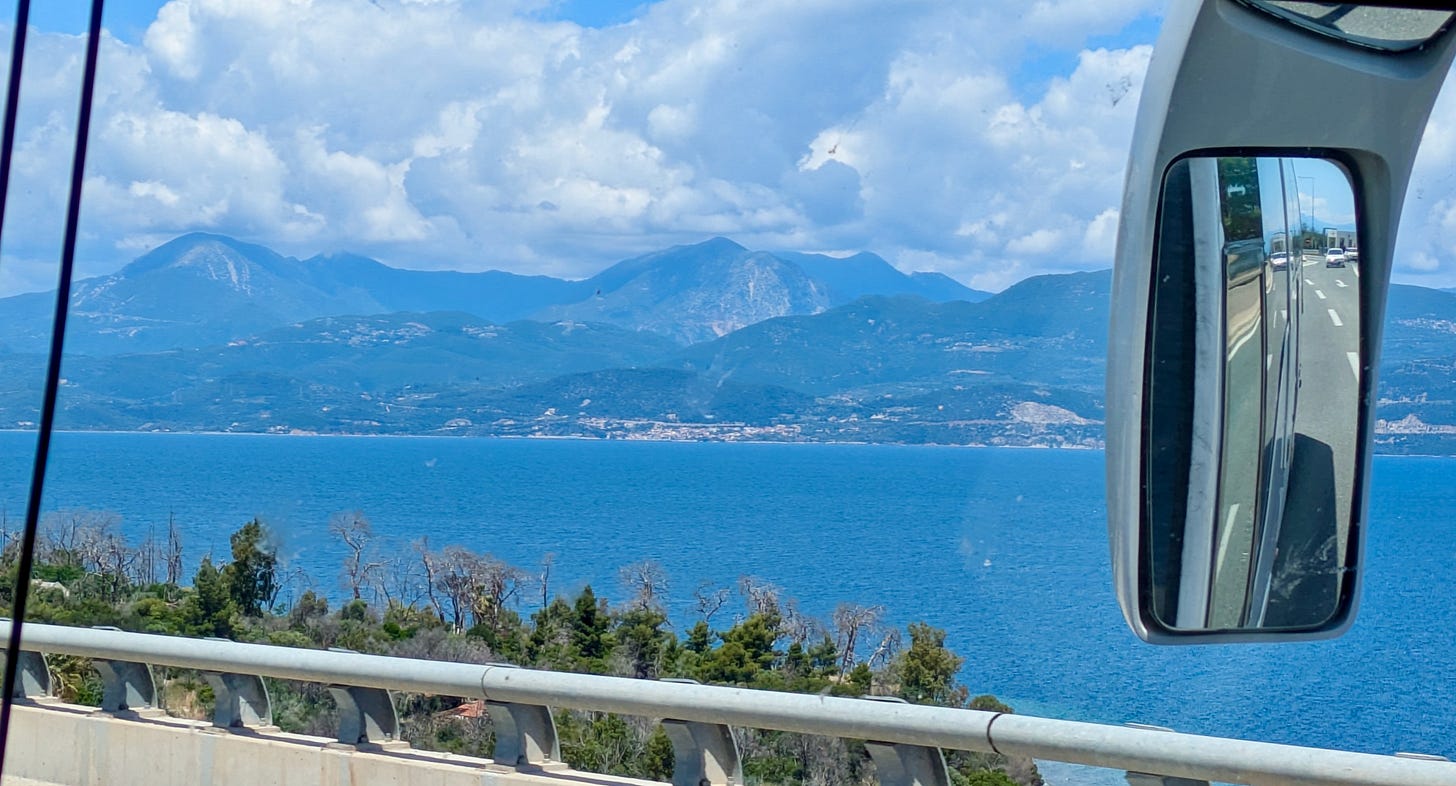



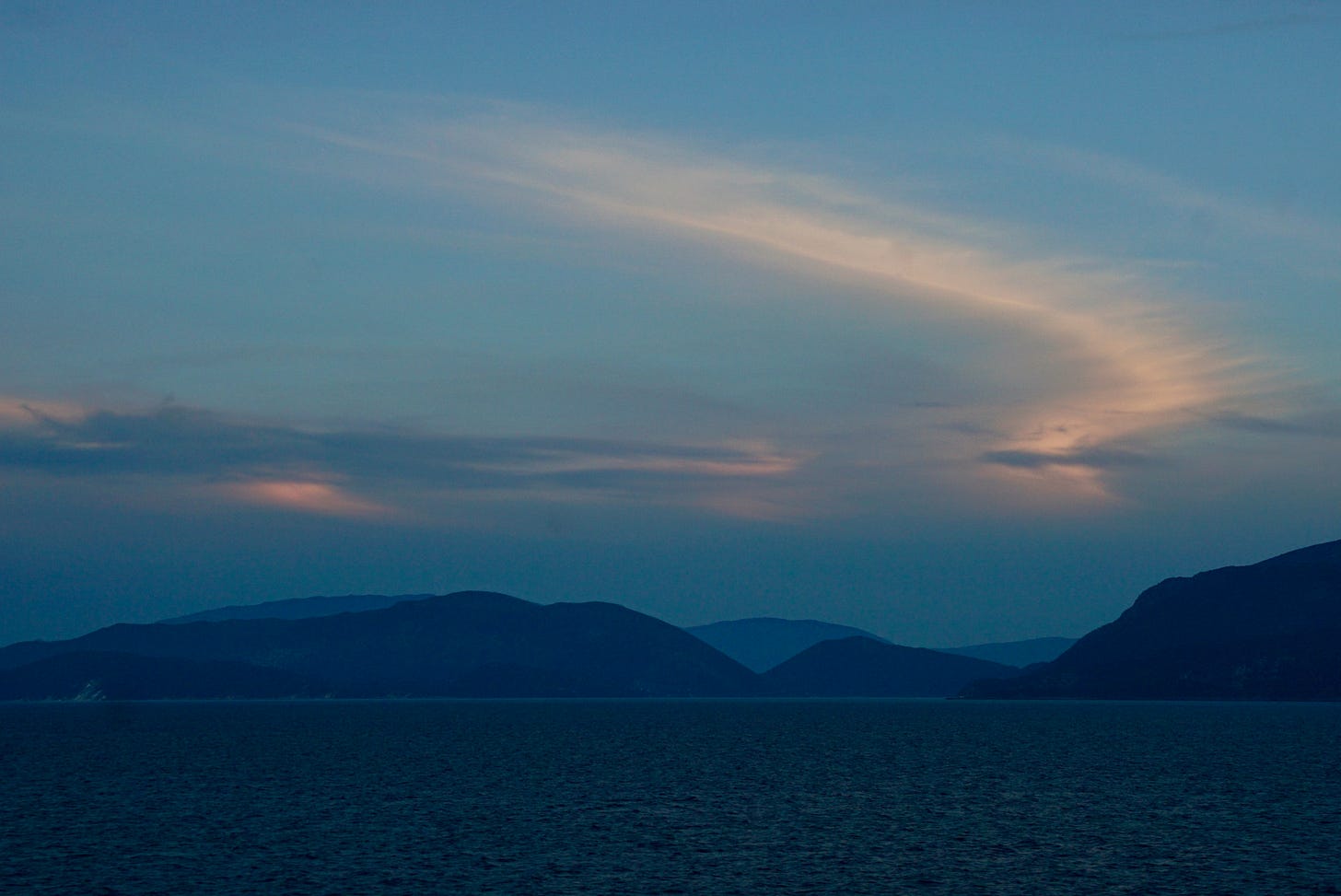

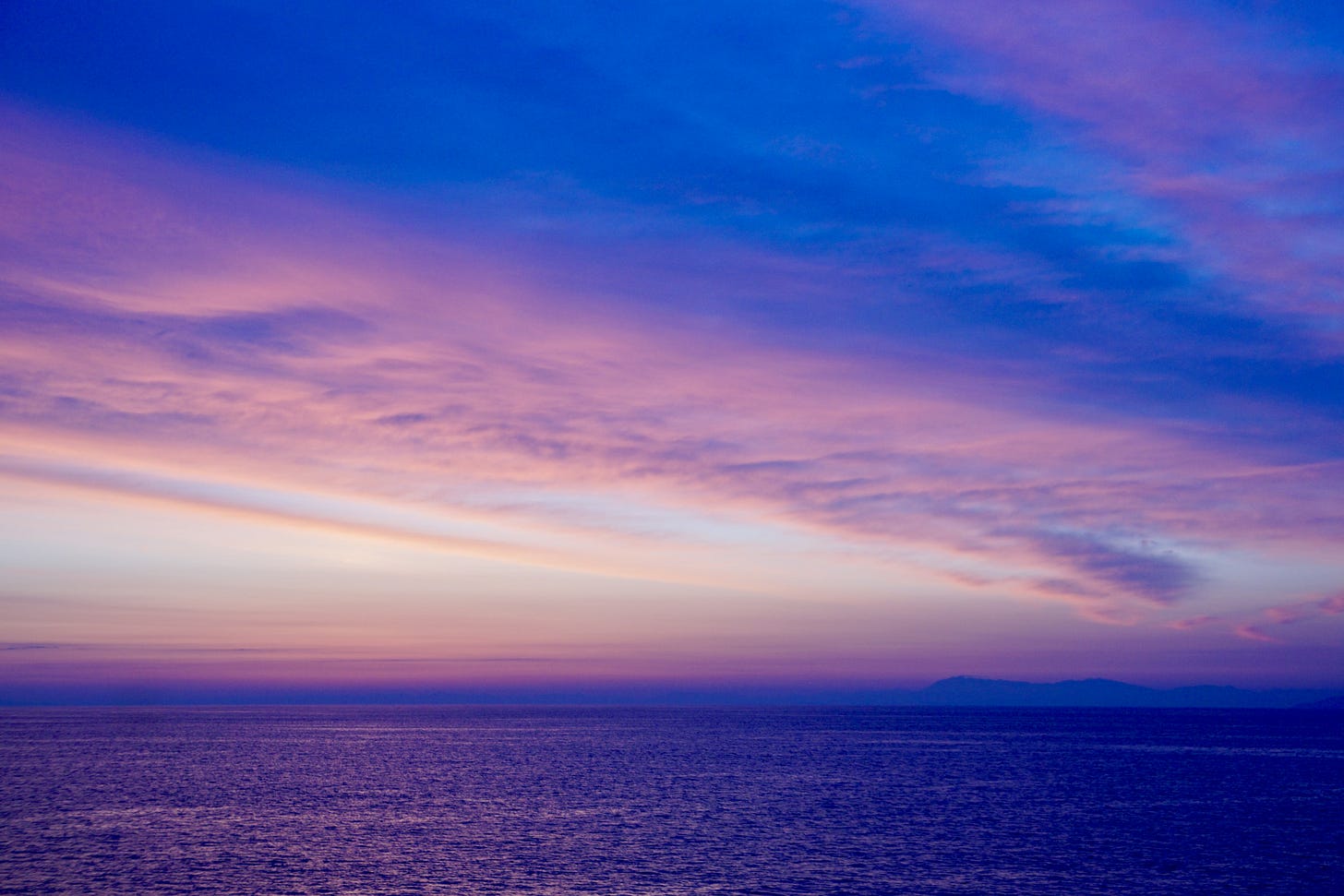



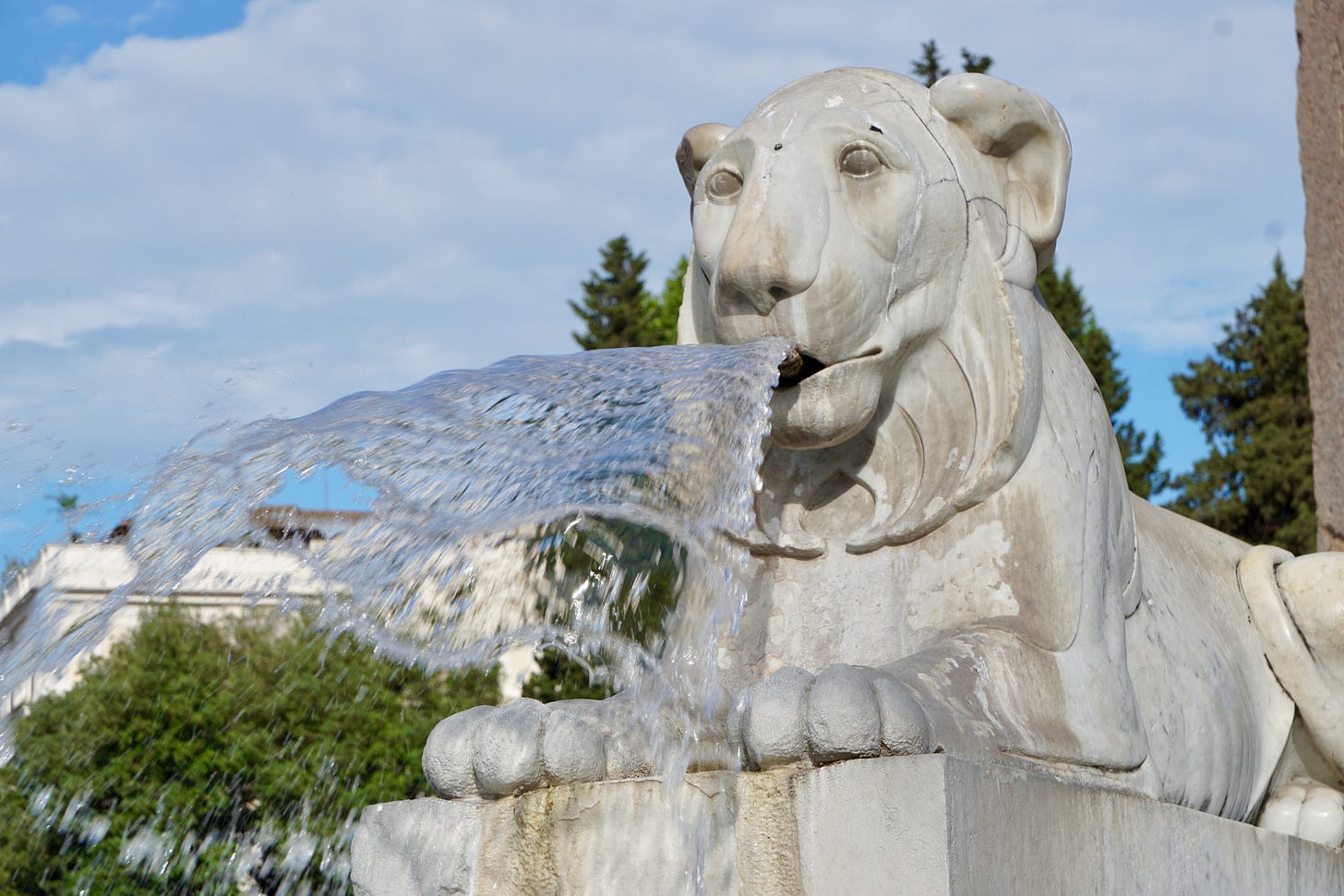

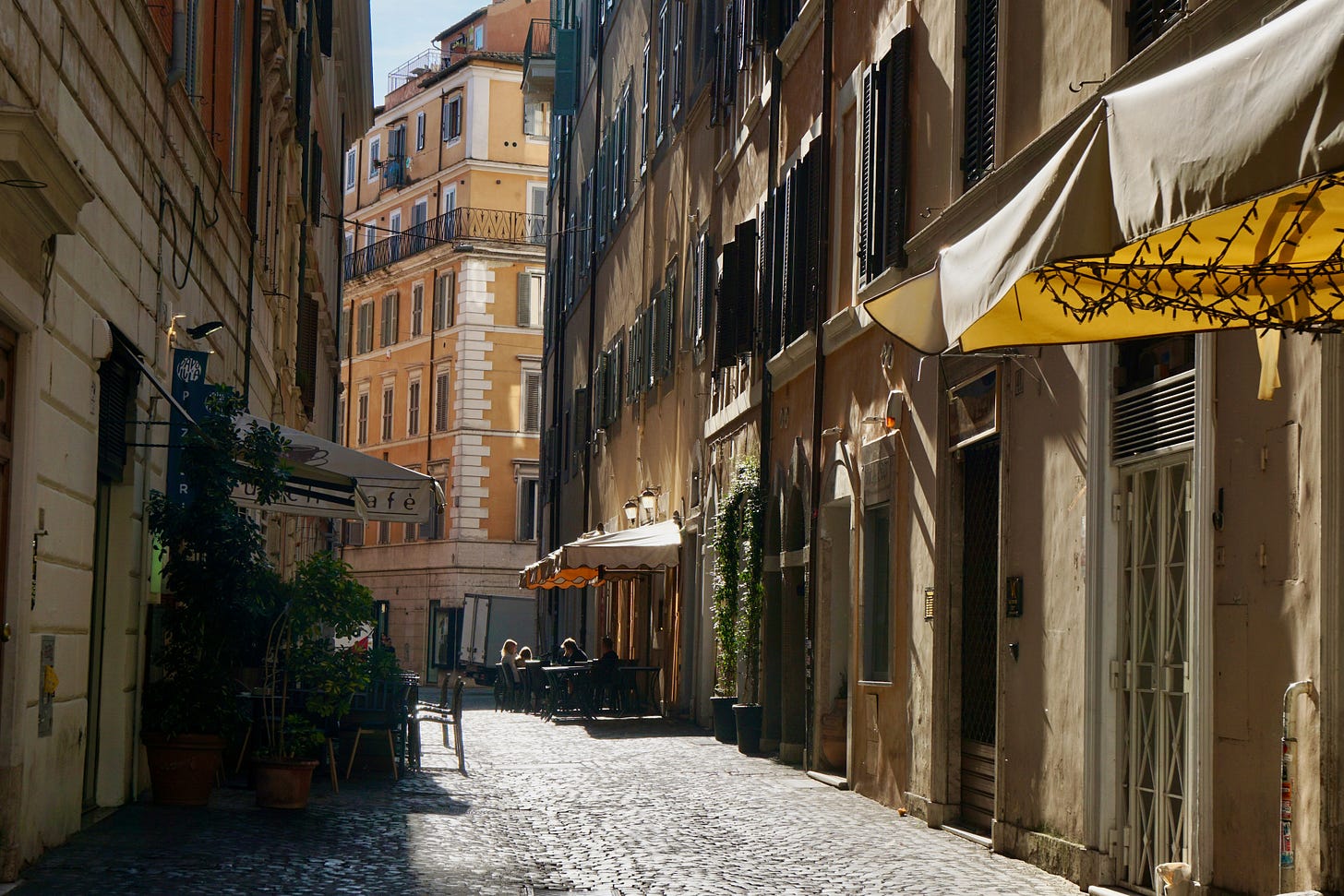
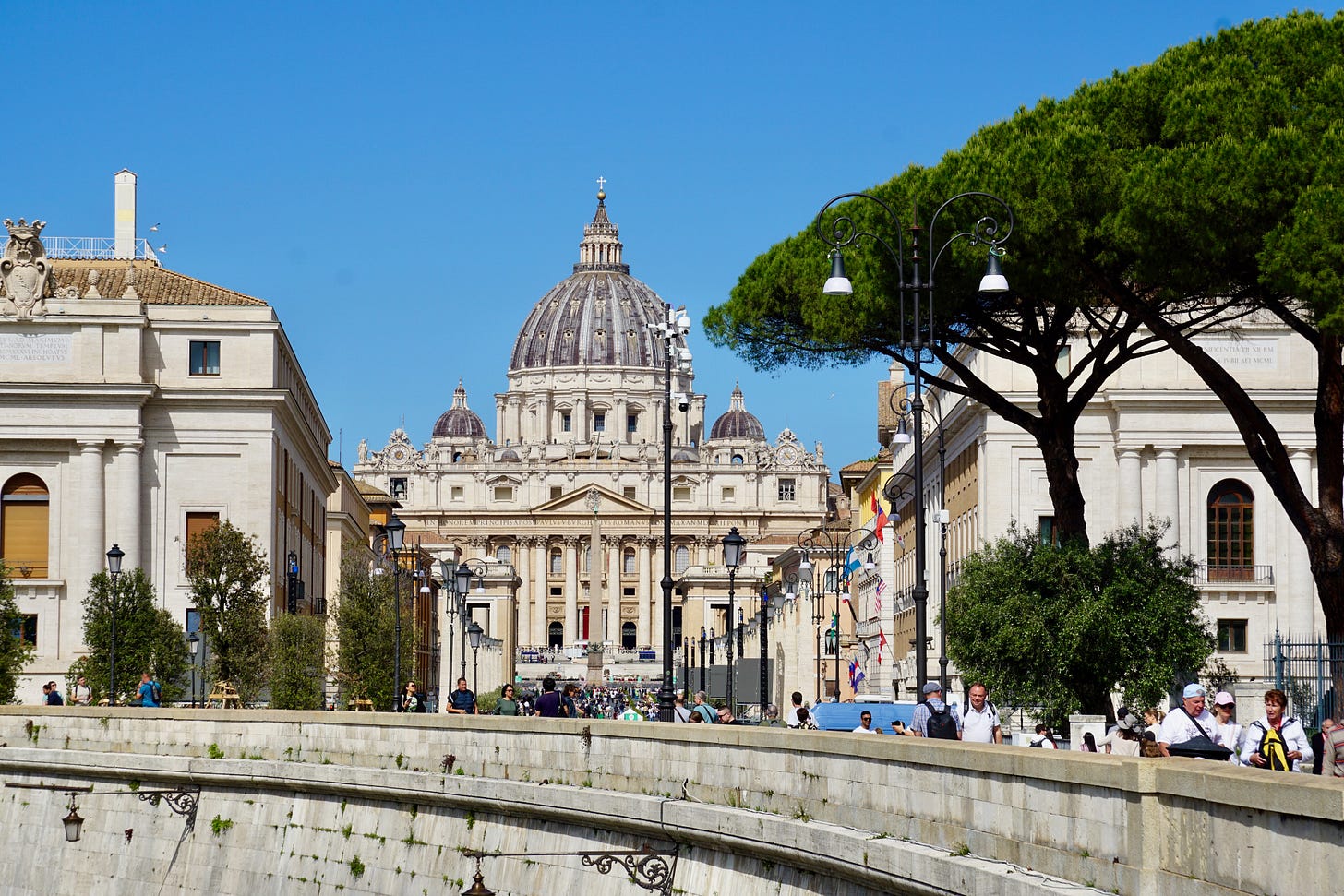
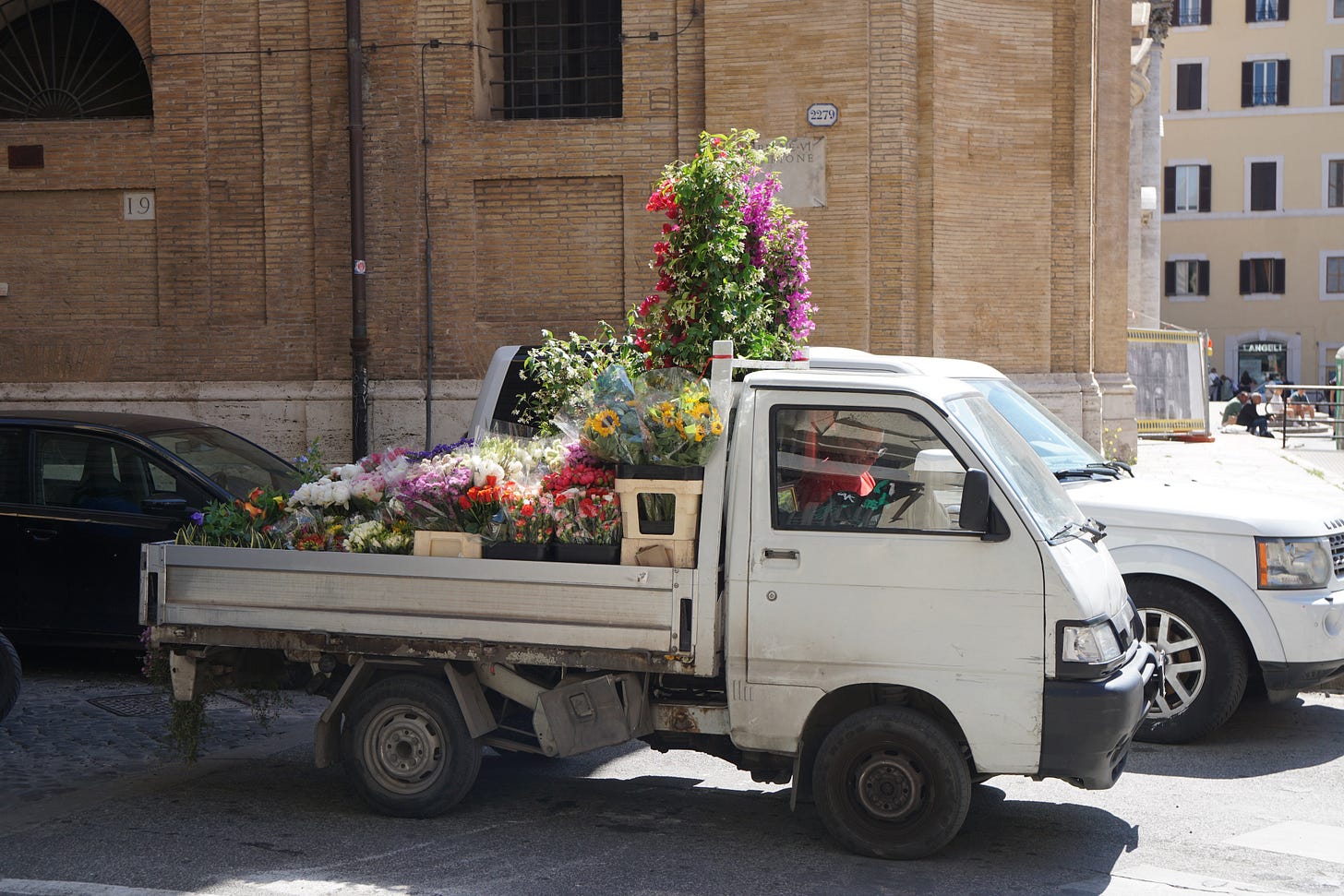
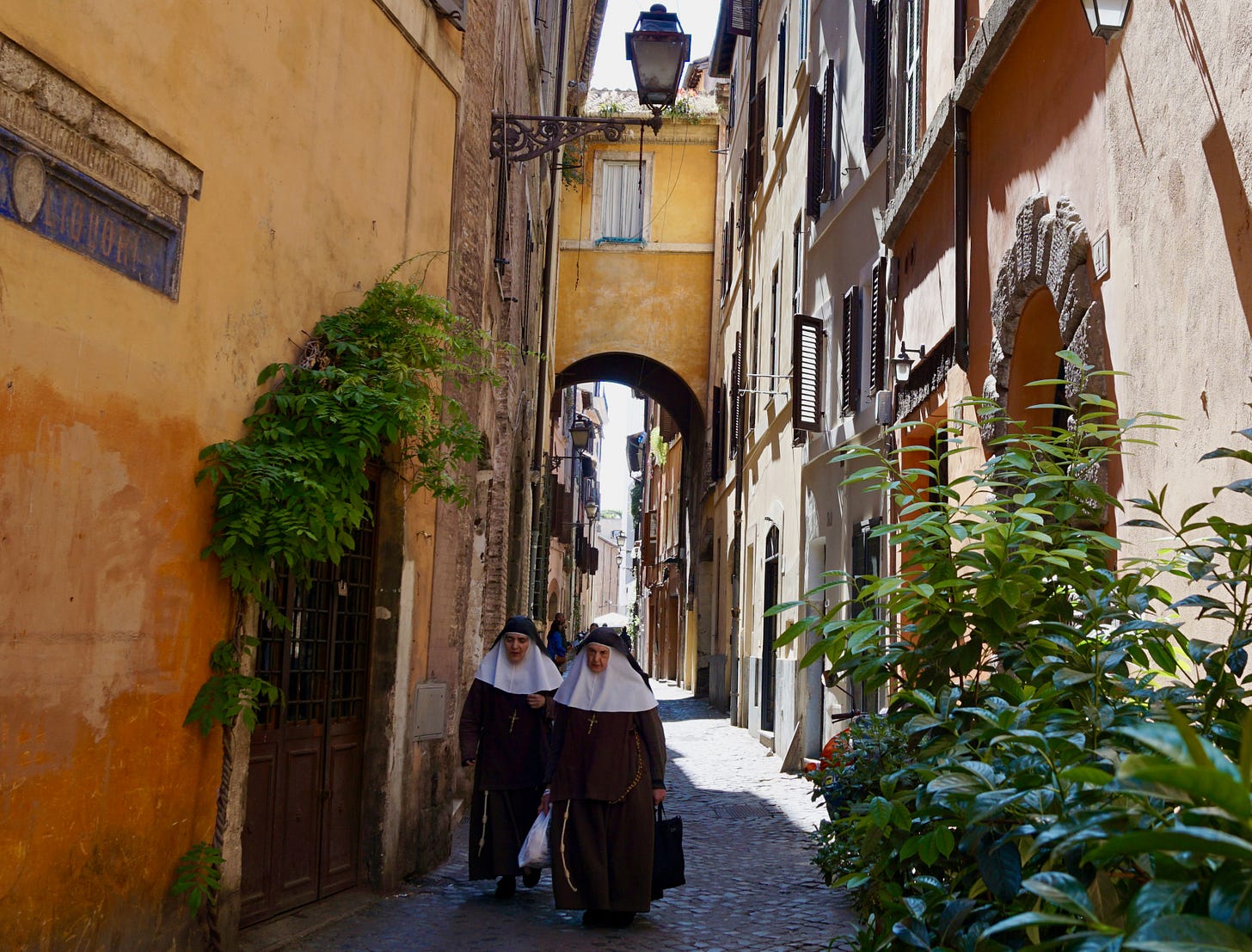
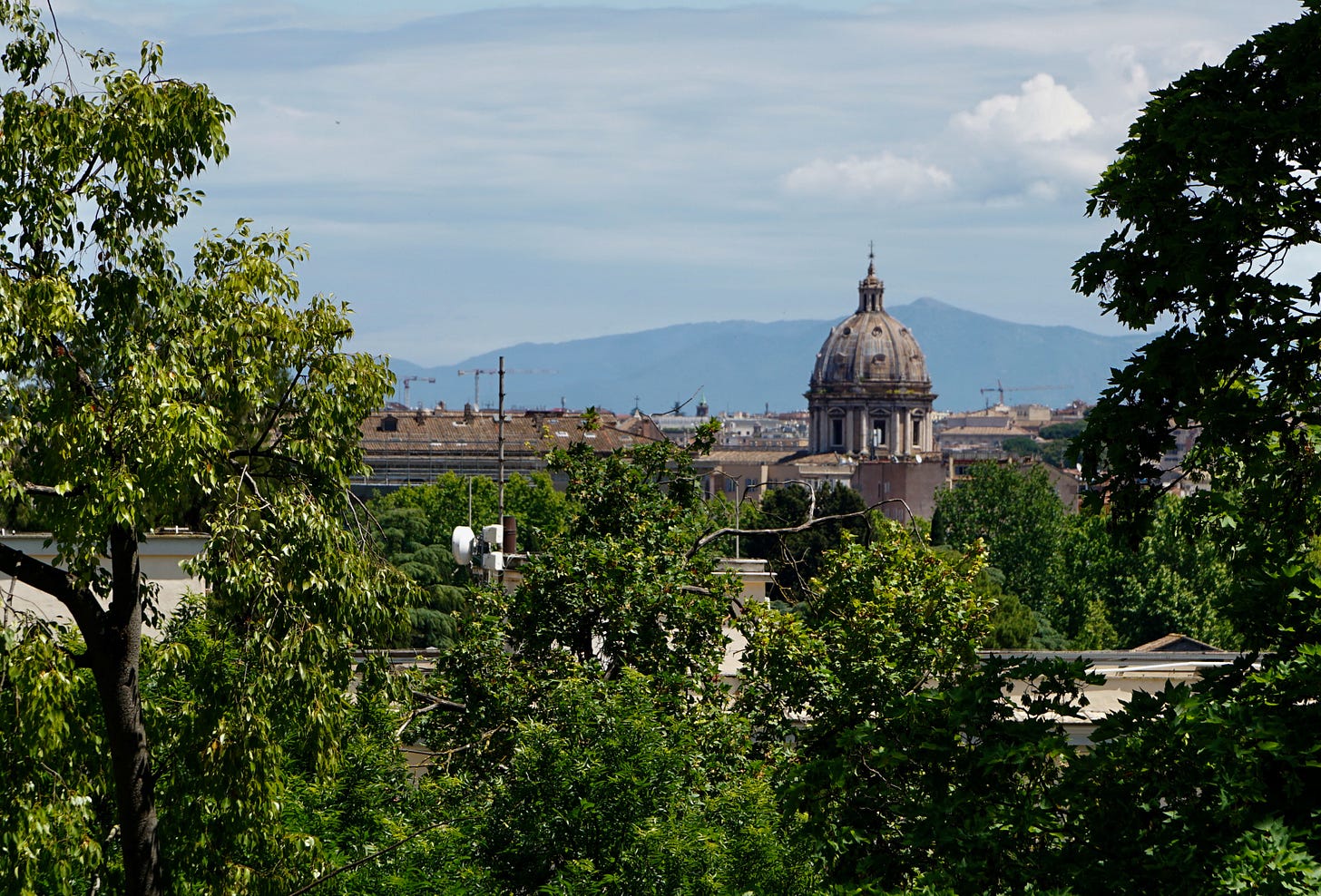
I did the ferry trip in 1975 (!) but it went to Brindisi then. Sleeping on deck no fun….
superb! I particularly appreciated the pics. I once did a 4,000 km trip driving from Bucharest to Glasgow in the 1990s. But your combination of ferries, trains and taxis is a wonderful way of travelling